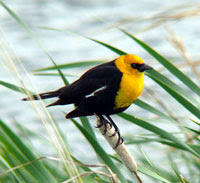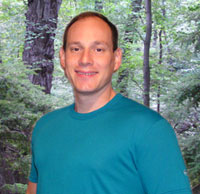 After being bitten half to death by mosquitoes and black flies in Canada, my brother and I ventured to our next main stopping point on our trip, North Dakota pothole country. Potholes are gouges left by the receding glaciers during past Ice Ages. These potholes today are many small lakes within the grassy plains. These have been a tremendous breeding ground for many water birds and a migration route for many other waterfowl that breed further north in Canada. The pothole region is essentially along the north-south line in the middle third of North Dakota. The area is bursting with all kinds of wildlife and is a favorite place of mine to visit. In good years you can roam around and see ducks even in every puddle. Unfortunately, the cold, dry, Spring in 2008 really created havoc on the bird populations here. The numbers were at least 30% of what we saw two years earlier, and the most of the grassland birds were non-existent. It was rather shocking, but very wonderful to have absolutely no mosquitoes!
After being bitten half to death by mosquitoes and black flies in Canada, my brother and I ventured to our next main stopping point on our trip, North Dakota pothole country. Potholes are gouges left by the receding glaciers during past Ice Ages. These potholes today are many small lakes within the grassy plains. These have been a tremendous breeding ground for many water birds and a migration route for many other waterfowl that breed further north in Canada. The pothole region is essentially along the north-south line in the middle third of North Dakota. The area is bursting with all kinds of wildlife and is a favorite place of mine to visit. In good years you can roam around and see ducks even in every puddle. Unfortunately, the cold, dry, Spring in 2008 really created havoc on the bird populations here. The numbers were at least 30% of what we saw two years earlier, and the most of the grassland birds were non-existent. It was rather shocking, but very wonderful to have absolutely no mosquitoes!We spent most of the time about 20-30 miles Northwest of Jamestown, roaming the back roads. We also visited the Arrow Wood National Wildlife Refuge, which is a good area. Yellow-Headed Blackbird, American White Pelican, Bittern, Snipe, Avocet, Upland Plover, Ring-Neck Pheasant, Blue-Winged Teal, Black-Crowned Night Heron, Marsh Wren, Northern Shoveler, Pied-Billed Grebe, Western Grebe, Cormorant, Red Head, and more are very common here during the month of June.
The first night was spent near a larger lake that had a wooded area left over from an old farmhouse windbreak. I recorded near the lakeshore as Avocet, White Pelicans, and Blue-Winged Teal fed near a reed bed. When it got dark I was able to record some Western Chorus Frogs along the roadway. I could hear lots of Coyotes yelping, but it got real windy and started to rain, so I wasn’t able to record them. While eating a late meal, we saw two Great-Horned Owl perching on some old grain silos.
Earlier the next morning we roamed around a bit to see what was around, which wasn’t very much. It was very windy. Wind is typical to the area, so getting great recordings is always difficult. There were amazing numbers of Marsh Wren calling from some of the reed beds. Yellow-Headed Blackbirds were a bit scarce. We spent some time at the Arrow Wood NWF, but then some large storms came in. We then drove to the Theodore Roosevelt National Park and the Little Missouri National Grasslands for a day, where the weather was very nice. The Little Missouri Grasslands are very scenic, but are mostly an open range cattle area. Sharp-Tailed Grouse, Turkey, and Pronghorn are common here, except I noticed the numbers were down since two years previous. Again, the Spring looked very late and the grass barely started growing for the year. The Bison and Pronghorn still had their full Winter coats on.
The next day we drifted back towards the potholes with a good idea exactly where the best spots were. The weather was now perfect and there was no wind. What a perfect rare day. In the evening we found a no hunting region near some smaller potholes. The music of chattering Marsh Wren, Yellow Warblers, and Yellow-Headed Blackbirds was beautiful. As the sunset, two packs of Coyotes hollered group choruses. It made a perfect recording. A little later nearby another small pond, I recorded ducks feeding, splashing in the water, and flying in, sounding like jets coming in for a landing. Snipe were putting on aerial displays and winnowing. Western Chorus Frogs were calling, a Bittern is heard in a nearby swamp, and a Marsh Hawk was screeching from it’s nest. This was another perfect recording. These recording will be in a new Natureguy Studio CD coming out before the end of 2008. I will also have some sounds from the grassland areas around the potholes.
We left the area the next day. I continued to snap photos of the area. We even found a Red Fox
 den near one of the dirt roads and I was able to snap some really great photos of one of the kits. It was a beautiful area, but we had to venture off to our next destination, Minnesota in search for Loons.
den near one of the dirt roads and I was able to snap some really great photos of one of the kits. It was a beautiful area, but we had to venture off to our next destination, Minnesota in search for Loons.

